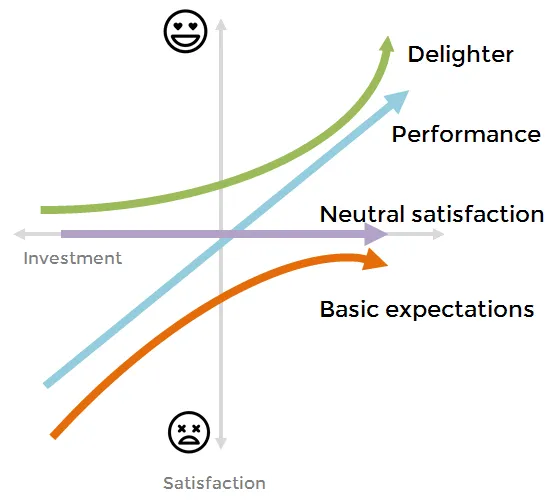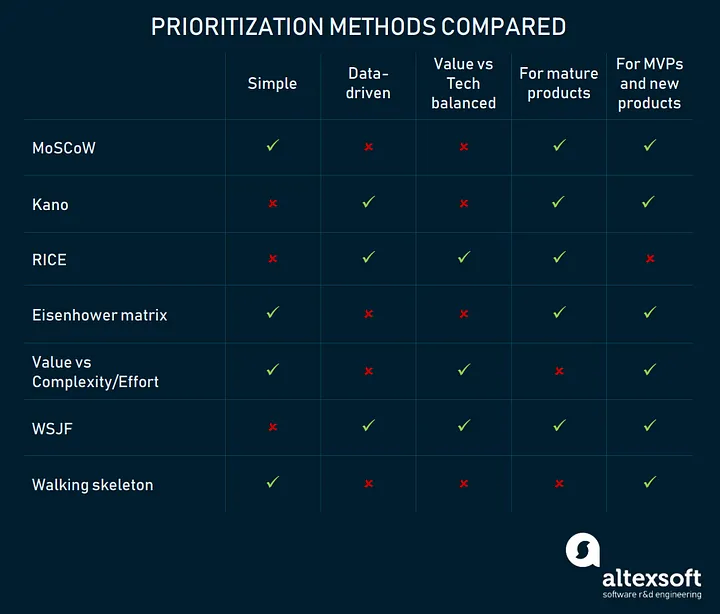Kano Model
The Kano model, from a user’s perspective, helps to identify which features are key differentiators, which are table-stakes and which are actually not relevant and therefore a waste of time and resources.
With the Kano model, features again are plotted on a two-dimensional chart, this time satisfaction of the user vs. sophistication of a feature (which can be translated to investment into it). As a result, features fall into one of four categories:
- Basic features that are considered must-haves, table-stakes and actually cause massive frustration when absent
- Neutral features that don’t actually add value and, hence, shouldn’t be worked on
- Performance features that help to increase satisfaction gradually
- Delighters are key competitive advantages because they have a great impression on users and might even allow users to forgive a weakness in another area


